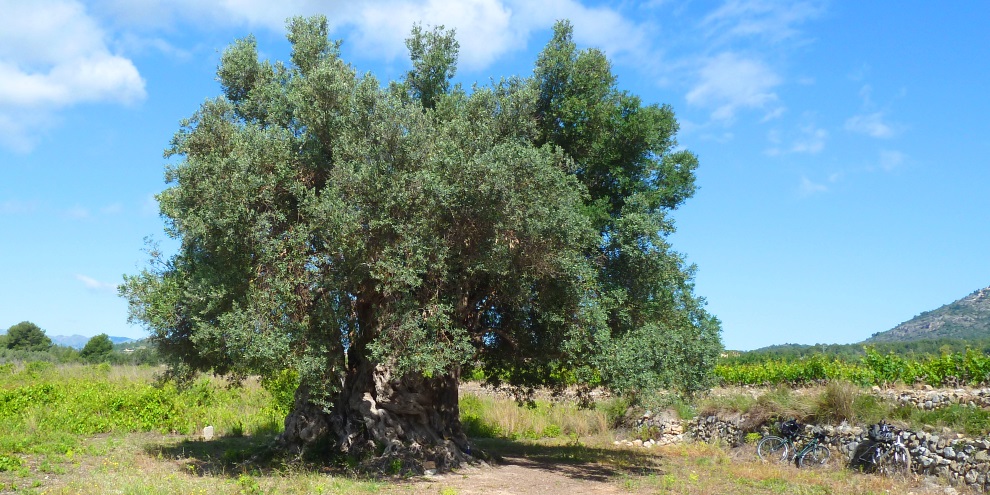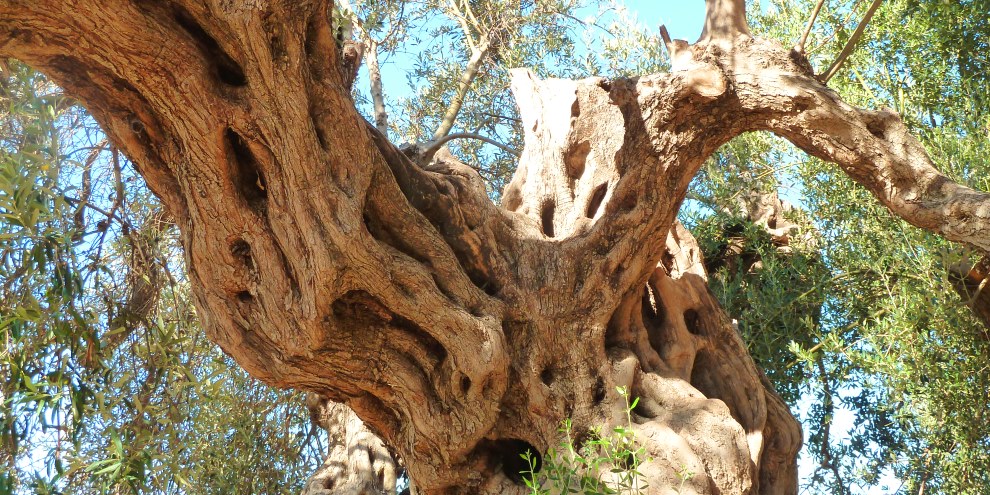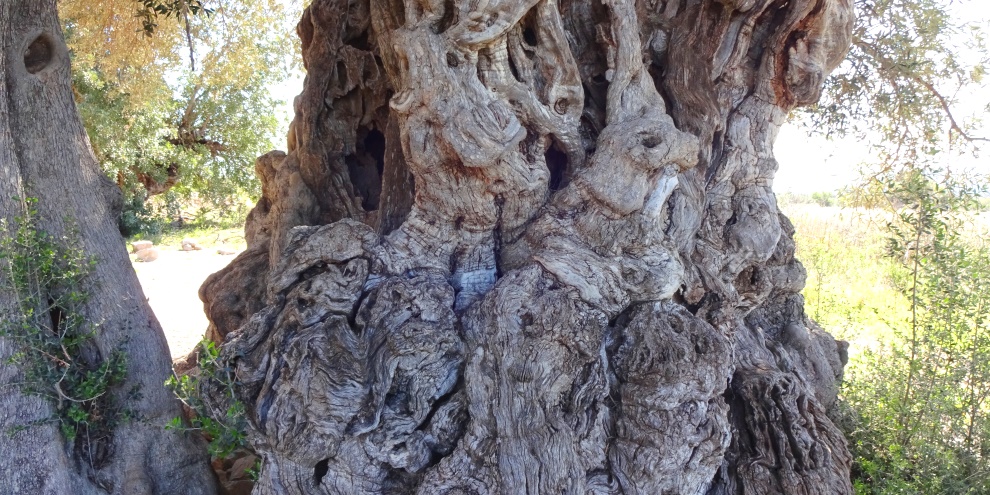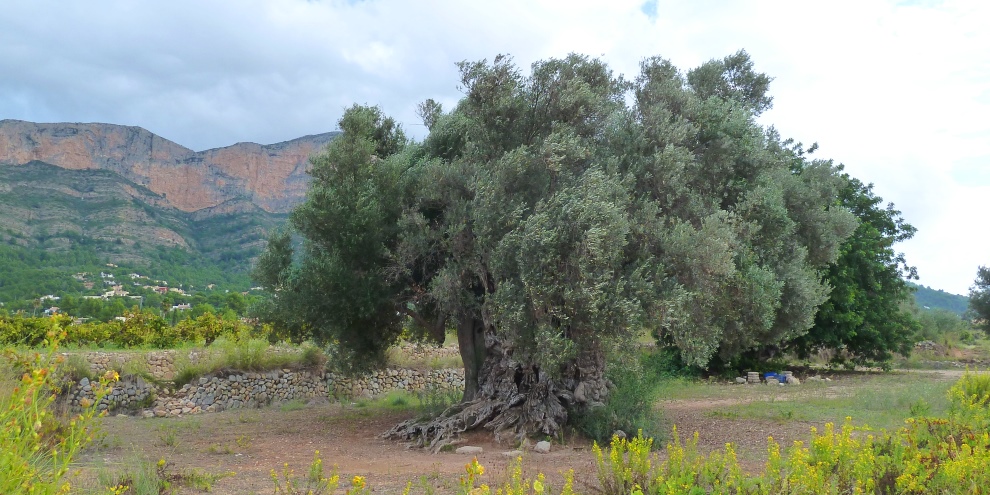
Sometime between 800 and 1,000 years ago, a tree was planted under the watching eye of the majestic mountain of Montgó, its steep southern cliffs providing protection against the savage northern winds. No-one knows exactly who planted it, although it was most probably a Moorish farmer who found the fertile soil and warm climate perfect for cultivating olives to make the much-loved and delicious oil from its fruit.
As the tree grew, it quietly observed as Xàbia changed over the centuries. By the mid-13th century, its Moorish cultivators had left to be replaced by the folk following in the footsteps of the Christian knights sweeping down from the northern kingdoms. On a low rise to the east, a village emerged, protected by a high defensive wall and fortress-church for there were pirates from the Barbary coast of northern Africa who constantly plagued the area seeking valuable loot. And still it bore its precious fruit.

As the tree grew, it quietly observed as the village grew in size and stature, desiring to break free from the authority of a larger town located on the dark side of the mountain and claimed the lands on which the tree grew. It watched as a king bestowed a royal title on the village and again when, years later, the village supported a descendant of that king during a savage war to determine the next ruler of the country; would they be French or Austrian? And still it bore its precious fruit.
As the tree grew, it quietly observed as the valley was divided by agreement and perhaps it was satisfied to find itself on the eastern side of the line, on land belonging to the village on the hill. And then it watched as foreign troops broke down the gates and ransacked the village, killing over a dozen residents and throwing its religious leaders from the church’s bell tower. And still it bore its precious fruit.

As the tree grew, it quietly observed as dried grapes boosted the economy of the village and watched as the walls came down and the mansions went up, funded by the proceeds of the carts full of raisins heading down to the sea to be shipped off to England and the Americas. And still it bore its precious fruit.
As the tree grew, it quietly observed as a nation tore itself apart, pitting neighbour against neighbour, family against family in a no-holds barred rampage of revenge. It watched as the village suffered, its church stripped of its medieval treasures and the great magnificent wooden altar burned, bullets pockmarking the walls outside. And still it bore its precious fruit.
As the tree grew, it quietly observed as a village recovered to become the jewel of the Costa Blanca, a shining beacon for the discerning traveller. It watched as apartments rose from the fields that once produced enormous wealth in the hope that these bland edifices would bring renewed fortune to its people. And still it bears its precious fruit.

The Ancient Olive Tree
Located about five kilometres to the west of Xàbia, the ancient olive tree sits just a few metres to the left of the old route between the town and Pedreguer which now forms part of the Camino del Alba which links Xàbia to the legendary Camino de Santiago. Standing seven metres high and extending some nine metres at its widest, it truly is a wonderful piece of living art. The trunk has split as it twists in all directions and smaller visitors could climb inside but we wouldn’t recommend it. It is a living monument, the oldest surviving tree in the area, and a protected specimen from which three different varieties of olive are still cultivated. That still hasn’t stopped vandals carving their initials or expressions of love into its trunk. But still it bears its precious fruit.
It sits almost alone but is accompanied by a single carob tree. It’s a quiet zone, best visited in the early morning as the rising sun strikes the tall southern cliffs of Montgó, but the tree sits on land that is privately owned so there is no information panel, no bench from which to admire it, no litter bins to discourage the irresponsible from throwing the remains of their snacks onto the ground around it. Visit it by all means but respect it for its history and for what it has seen over the centuries. And wonder just what it might tell you if only trees could talk …
RELATED LINK: Walking the Valley of the Ancient Olive Tree
“Name three types of olives.”
“Olives! I wouldn’t know one type!”
“Well, there are three. You can get green ones, you can get black ones, or you can get stuffed.”
JOHN MARSDEN (1950-)
Author

